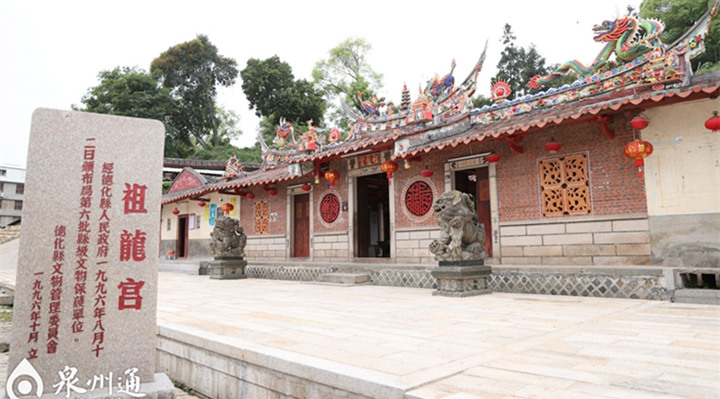外国人眼中的“中国白”2(连载)

-
小陶陶
2021-06-15 1171
14740
编者按:
由柯玫瑰(Rose Kerr)、约翰•盖尔(John Ayers)所著《——德化白瓷》(Blanc de Chine—porcelain from Dehua)于2002年经新加坡亚洲文明博物馆出版,是继唐纳利《——福建德化瓷》之后的一本专门研究德化白瓷的专著,影响甚为深远。
该书收录的都为国外研究德化白瓷的知名学者所撰写德化白瓷研究资料。包括柯玫瑰的“德化器物款识介绍”,海蒂(Heidi Tan)的“鉴赏家探访”,约翰•盖尔的“的影响”,何翠媚(Chuimei Ho)的“考古眼光中的”,郭勒逊(Kenson Kwok)的“德化雕塑结构的一点看法”, 埃娃•施特勒伯(Eva Strober)的“德累斯顿的斯特朗大帝收藏的德化瓷”,以及附录介绍等七个部分,从不同角度介绍了德化白瓷。与此同时,该书收录的160件德化窑精品,为Hickley家藏,后捐赠给新加坡亚洲文明博物馆,是了解、品鉴、研究德化白瓷不可多得的艺术精品。
本栏目将定期精选出相关代表性文章进行翻译,以飨读者。然而,由于作者水平的局限,翻译过程中难免有所错漏,不足之处敬请各位读者提出宝贵意见。
Blanc de chine: some reflections by John Ayers 的影响(二)——约翰 盖尔(翻译:孙延燕)
Volker’s study highlights the puzzling problem of the long Ming period between 1400 and 1600 at Dehua: and evidence in this connection comes also from the Philippines. In a paper prepared for the 1968 Symposium on Chinese export wares held in Manila, Cecilia Locsin writes that several thousand pieces of this kind have been dug up in those islands. Some of them from controlled excavations. They include in particular a large number of pieces characterised by their more porcellanous and compact body and with laze better suited to and fused to it. Their shapes and decoration resemble those of the less porcellanous type, and all show signs of having been made in moulds. Their appearance in burials coincides with that of fourteenth-century blue-and-white, celadon and other types.She comments further that, inexplicably, the ware disappears almost totally in those sites where Ming lue-and-white, i.e. fifteenth-and sixteenth-century wares, appear. The wares of this time, however, she says, ..show a new vocabulary of forms, much fewer but greatly improved in quality, It is a pity that Mrs Locsin had not space or time for fuller details, but her comment bears out our wider experience suggesting that the Dehua export trade was for some reason in decline by this time.
沃尔克的研究突出了德化明朝1400年至1600年这段长时间之间这一令人困惑的问题: 这方面的证据也来自菲律宾。在为1968年在马尼拉举行的中国出口商品研讨会准备的论文中塞西莉亚 劳辛写道,在这些岛屿上已经挖掘出几千件此类商品,其中一些来自受控的挖掘(1968年)。他们特别包括大量的作品,其特点是更多瓷化的和紧凑的胎体,并与釉色更好地适应和融合。它们的形状和装饰类似于不那么多孔的类型,并且都显示出用模具制造的迹象。它们在墓葬中的出现与14世纪的蓝白色、青瓷和其他类型的瓷器相吻合。她进一步评论说,令人费解的是,在那些出现明代青花瓷器(即15和16世纪的瓷器)的地方,瓷器几乎完全消失了。这个时代的商品,然而,她说,“表现出一个新形式的词汇,数量少得多但大大提高了质量。”遗憾的是,洛克辛夫人没有空间和时间讨论更充分的细节,但她的评论证实了我们更广泛的经验,表明德化出口贸易是由于某种原因在这个时候下降。
To the fifteenth century, Donnelly ascribes a handful of items, such as for example the small jarlets illustrated as Plate 2A in his book; and also, the larger type of Jar appearing as Plate 2B. The shape of this is decidedly unusual at whatever date while the relief decoration of a peony scroll and triangular leaf border, as he remarks, is more in line with early models than with seventeenth-century ones.
到了15世纪,唐纳利把一小部分物品,例如小罐子归为他书中所说的2A号盘子,大罐子归为2B号盘子。无论何时,这盘子的形状都绝对不同寻常,而他所说的牡丹花和三角形叶缘的浮雕装饰,与17世纪的模型相比,更符合早期模型。
The most important example from this period at the British Museum is not part of Donnellys bequest. It is a bowl dated by an underglaze-painted inscription round the rim in brownish pigment referring to the sixth year of Zhengde, or AD 1511; and consequently this is the earliest known dated Dehua piece Donnelly 1969: P1 6A). Donnelly accepts it without reservation -correctly, I think-as being of standard blanc de Chine material. The inside Is blackened with accretions, perhaps from overlong use on an altar, but le porcelain itself is creamy and fine grained and of excellent quality, thickly made, with a close-fitting glaze; this must be a rare surviving example of the better-class ware of its time.
大英博物馆这个时期最重要的例子,并不是唐纳利遗产的一部分。而是一件是边缘有釉下彩褐色颜料题字、标注正德六年或公元1511年的一个碗;这是已知最早的能够追溯年代的德化作品。唐纳利毫无保留地接受了它,我认为这是标准的瓷器。瓷器的内部因长时间放在祭坛上使用而逐渐变黑,但是瓷器本身是乳白色的,纹理细密,质量上乘,釉色厚重、胎釉结合完好。这一定是那个时代最好的、罕见的而幸存的瓷器。
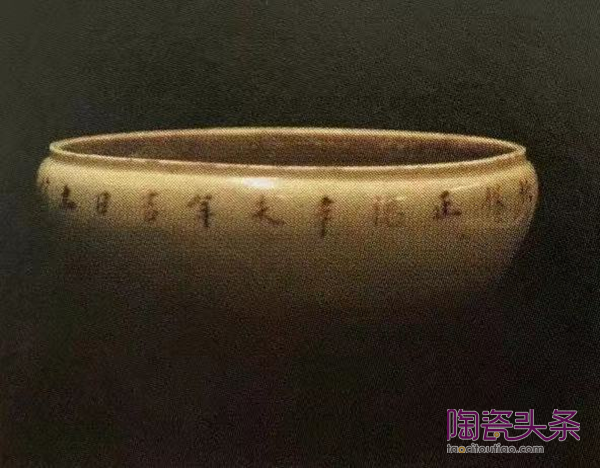
(Figure 6: Bowl with inscription dated AD 1511. Diameter 17.8 cm. British Museum. 图6:刻有铭文的碗,日期是公元1511年。直径17.8厘米。大英博物馆。)
Donnelly's acceptance of this 1511 pi tece fits oddly with his other statement that blanc de Chine begins only at the end of the Ming Mid-to late Ming Dehua is represented also oy a type of Nar ase, baluster shaped and with side handles on the neck, which were no doubt based on bronze originals. A pair in the British Museum is not unlike the 1511 jar in their material: somewhat yellowish in colour, and with a sort of brown speckling in parts of the glaze. Donnelly illustrates another in a Hong Kong collection dated to the year 1586 in similar brownish pigment, as well as a not-too-different example in the Percival David Foundation dated 1639: which shows just how slow was the pace of development.
唐纳利接受这1511年的陶瓷与他的另一个说法奇怪地吻合,那就是“”于明朝中后期才开始。明代中晚期的瓷器以一种祭祀用的瓶子为代表,为栏杆状,壶颈有侧把手,这毫无疑问是基于青铜原件。大英博物馆的一对瓷器和1511年的瓷器在材质上很相似: 颜色有点黄,部分釉面有棕色斑点。唐纳利在香港的一个1586年的藏品中,展示了另一个用类似的褐色颜料、没有太大不一样的在1639年的珀西瓦尔•大卫基金会的例子: 这显示了发展的速度是多么的缓慢。
We have arrived at the seemingly more familiar territory of the seventeenth century, where all should be made easier by the rational study of known imports into Europe. But not wholly so-as we were effectively reminded three years ago by the remarkable undersea finds of Captain Hatcher. Hatcher found less blanc de Chine ware than one would ideally like; nevertheless, his sample is proof that in some cases Donnellys attributions are much too late. The tirst of these shipwreked cargoes from the South China Sea contained a mass of blue-and-white and other export wares, among which were two items dated by inscrip tion to the year 1643 and we may reasonably deduce that t most of the shiy Ip's cargo was made at, or not too long before, that date. Many of the blanc de Chine items are reproduced in a somewhat feeble catalogue illustration which all but the large pot in the centre and dish directly above it are of this ware.
我们已经到达了十七世纪似乎更为熟悉的领域,在那里通过对欧洲已知进口物的理性研究,一切都会变得更加容易。但并非完全如此——正如三年前哈彻号沉船在海底发现的令人瞩目的东西有效地提醒了我们。哈彻号找到的瓷器比理想的要少; 然而,他的瓷器这个例子证明,在某些情况下,唐纳利的贡献太晚了。这些从南中国海运来的货物中,第一批装载了大量的青白瓷和其他出口商品,其中有两件标明日期为1643年,我们可以合理地推断,大部分这批货物是在那一天或那天之前不久制造的。许多的产品都在一个有点模糊的目录图录中再现,除了中间的大罐和正上方的盘子之外,其他都是这类产品。
Notice first the two incense burners in the top row on either side of the dish, which are of cylindrical shape with three cloud-scroll feet, and have a band of archaic bronze-style ornament impressed round the muddle. This very common type of censer is lustrated by Donnelly together with another encircled by bamboo ribbing, and a third that is completely plain. It would be difficult to represent these various types as forming any particular progression or development and some of them may well have remained fashionable for some decades.
首先注意盘两边顶排的两个香炉,圆柱形,有三个卷云脚,周围有一圈陈旧的青铜纹饰镶嵌围绕中间。这种非常普通的香炉被唐纳利所阐释,另外还有一个被竹子环绕的香炉,和一个完全普通的香炉。很难把这些不同的类型陈述为任何特定的进展或发展,其中一些类型可能几十年来一直很流行。
Two cups on either side of the central vase are worth remarking The one on the left is one of the so-called'trick-cups', with a small, monk-like figure standing in the centre, said to represent a celebrated scholar-collector of the late sixteenth century; the figure conceal als a hole in the bottom in such a way that the drinker gets his clothes wet -an apparentl very popular late-ming joke. Donnelly remarks that Augustus the Strong had one of these in his collection before 11, which gives us a date for it": but he should have recalled that such cups were already being made in Ming blue-and-white. The other cup is fruit- shaped and has a knobbled surface, like a half-lychee -another conceit belonging very much to the declining years of the Ming as its presence here confirms .
中央花瓶两边各有的两个杯子值得注意。左边的那个是所谓的“魔术杯”中的一个,中间站着一个小小的僧侣般的人物,据说代表了16世纪晚期一位著名的学者收藏家;这个人物在底部隐藏了一个洞,以至于饮酒者把衣服弄湿了——这显然是一个非常流行的晚明笑话。唐纳利表示,奥古斯都在11岁之前就收藏了这样一个杯子,这给了我们一个时间。另一个杯子是水果形状的,有一个圆球状的表面,像半颗荔枝——这也是一个与明朝衰落时期非常相似的奇观正如它在此出现证明的。
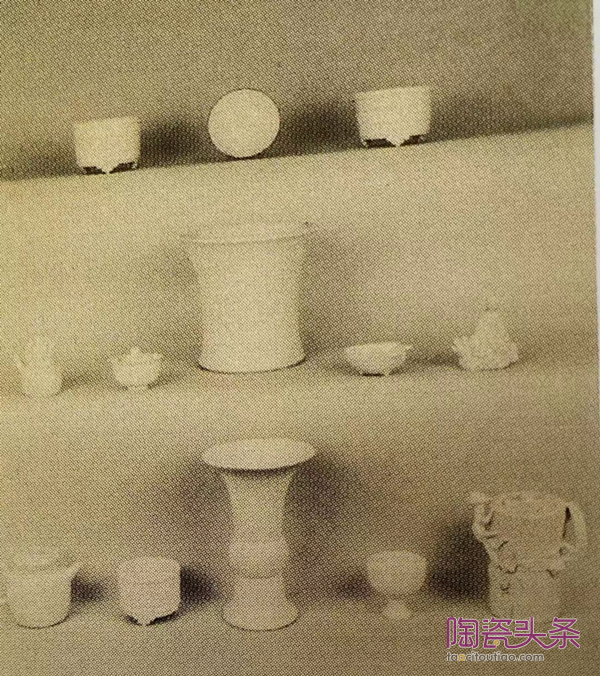
(Figure 7: Mainly blanc de Chine ware recovered from the south China sea, 1643. Christie’s. 图7:主要是1643年在南中国海,发现的白中白瓷器。佳士得拍卖行。)
On the lower shelf to the right we have a small stem cup, and next to that a more striking discovery in the form of a cylindrical wine-pot with dragon-handle and spout. I shall, however, return to this and deal first with the large piece in the centre: a beaker vase in the form known as gu. Recent evidence of importance in this connection is the fine blanc de Chine gu that came to light in the tomb of the Ming emperor Wanli, who died in 1619. The example in Figure 8 is somewhat more slender perhaps than the Hatcher piece but, with its encircling ribs above and below the central boss, not very different from another included in Marchant's exhibition, nine inches or so in height and with a fine ivory-white glaze, this is an elegant piece for which their dating of"c. 1640'seems in every way reasonable.
在右下层架子上我们有一个小茎杯,旁边还有一个更引人注目的发现,是一个带龙柄和壶嘴的圆柱形酒壶。不过,我还是回到这里,首先处理中间的大件物品: 一个烧杯花瓶,叫做觚。在这方面最近的重要证据,是在明朝万历皇帝墓中发现的瓷觚,他是于1619年逝世的。图8中的例子可能比哈彻号的作品要细长一些,但是由于它的中央的上面和下面环绕的浮雕,与马钱特展览中的另一件作品没有太大的不同,高9英寸左右,上有精致的象牙白釉,这是一件优雅的作品,他们对“1640年”的断代从各个方面看都是合理的。
Such a piece indicates standards of quality in the late Ming that Donnelly would have been reluctant to concede; he would no doubt, however, have been even more astonished by the dragon-handled wine-pot The Victoria and Albert Museum has one of similar design(Fig. 9)and in rather better condition, the Hatcher one having suffered somewhat from its long stay on the seabed. This item appears as No. 2 in the Dresden inventory of tea things; although in China it was probably intended for wine. Intriguing, also, is the appearance of an unfamiliar form of Dehua teapot- rather tub-shaped with a wide mouth, flat lid and small sloping spout(Fig. 10): this somewhat resembles a form found in early Yixing wares. The first known blue-and-white teapots are apparently those found in this same wreck. Another form of small wine-pot, with bam- boo-stvle ribbed sides, that adds interestingly to the repertoire also occurred in the wreck.There is one in the Victoria and Albert Museum very like it, but of rather better quality. Relevant factors in identifying the mid-seventeenth century types of blanc de Chine remain firstly the material itself, which is repeatedly of fine, ivory-like quality, and usual an altogether thicker and stronger style of potting, noticeable especially in the handling of the foot.
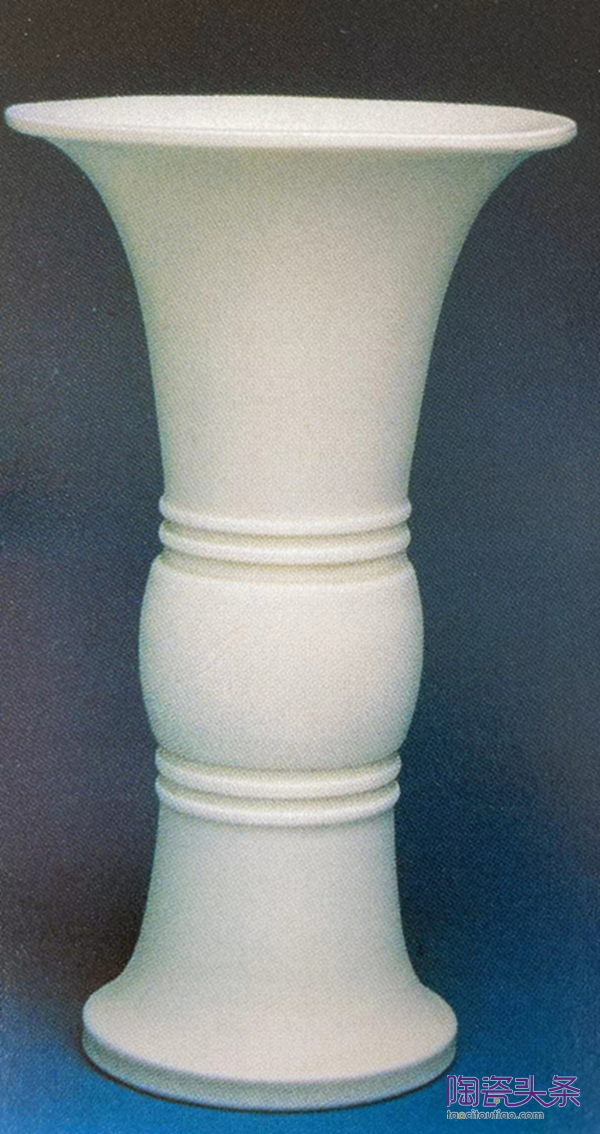
(Figure 8: Gu Vase.Height 22 cm.1630-60. S.Marchant and Son.图8:觚,瓶高22厘,1630-60。马钱特和他的儿子。)
这件作品表明了晚明时期的质量标准,唐纳利不愿意承认这一点,然而,他更为惊讶的无疑是龙柄酒壶。这个维多利亚和阿尔伯特博物馆有着类似的设计(图9),而且状况更好,哈彻号沉船的瓷器因为长期留在海底而受到了一些影响。这件物品在德累斯顿茶具清单中排名第二,尽管在中国它可能是用来作酒具的。另外,一款外形不寻常的德化茶壶,形状像桶状,有宽口、平盖及小斜嘴(图10) ,与早期宜兴器物的形状颇为相似。已知的第一个青白茶壶,显然就是在这个废墟中发现的。另外一种小型的酒壶,有着竹子一样的棱纹边,有趣的是,在残骸中也发现了同样的物品,在维多利亚和阿尔伯特博物馆有类似的物品,但是质量要好得多。鉴别十七世纪中叶相关因素首先是材料本身,它反复呈现出象牙般的优良品质,而且通常是一种更厚、更强的陶器制作风格,尤其是在“脚”的处理方面。
I turn now to an important-perhaps indeed the most important-aspect of Dehua production: that of figure models. Donnelly gives these three chapters in his book but it is still hardly enough, while illustrations of figures take up almost half the 150 plates By the end he clearly did not regard the problems they raise as to any great extent resolved and many of his dates are avowedly tentative: 1750 to 1800 or later being a good example for a piece bearing the mysterious so-called fisherman mark. Such caution is not surprising in view of the great lack of firm evidence and there are no easy answers to the questions arising over the twenty-four or so different modellers whose marks he records, about not one of whom is anything of consequence recorded, from the seventeenth right down to the twentieth century when more than a few of them may well, I fear, have been active.
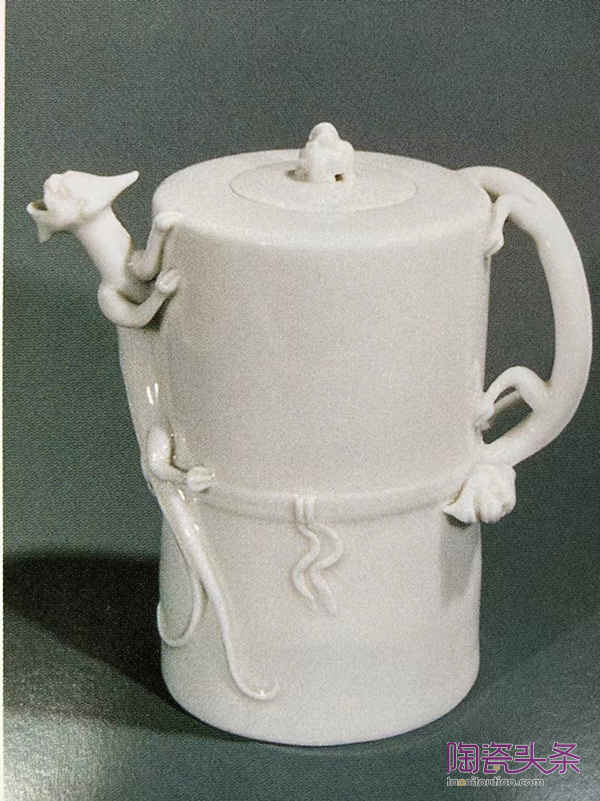
(Figure 9: Ewer with dragon handle and spout. 1630-60.Victoria and Albert Museum. 图9:龙柄龙嘴壶。1630-60.维多利亚和阿尔伯特博物馆。)
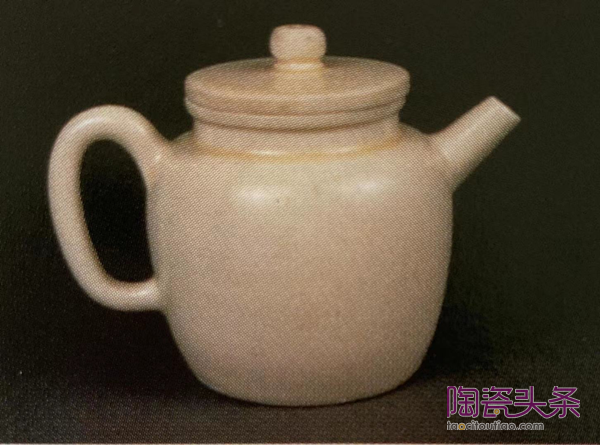
(Figure 10: Teapot recovered from the south China sea. Heitht 11cm.1643. Christie’s. 图10:从南中国海找到的茶壶。11厘米1643。佳士得拍卖行。)
现在我要谈谈德化作品的一个重要方面——也许确实是最重要的方面: 人物雕塑。唐纳利在他的书中给出了这三个章节,但这仍然是不够的,虽然瓷雕的插图占了几乎150个板块的一半。到最后,他显然没有认为他们提出的问题在任何大的程度上解决了,他的许多日期 明确的是试探性的: 1750年至1800年或以后是一个很好的例子,一块承载了神秘的所谓“博及渔人”款。这种谨慎并不令人惊讶,因为缺乏确凿的证据,而且对于他记录的二十四个左右不同的模型制作者所产生的问题也没有简单的答案。这些模型制作者中没有一个人的标记是有重要意义的,从17世纪到20世纪,我担心他们中的很多人都曾经活跃过。
As to the quality and merit of the figures he was in no doubt. "In the finest of them, he wrote, ". superb modelling and plastic authority are seen to advantage and, as Rackham put it, provide a test of aesthetic discrimination than which a better could hardly be found. Or to quote W. B. Honey, who was equally at home among European figures, ‘Modelling at once bold and sensitive with a remarkable sense of rhythm, was helped by a rare quality in the material, which seems to have the property of vitrifying without losing shape. The best Fukien figures may indeed be held to be the finest porcelain figures ever made;.the characteristic fragility and nervous delicacy of porcelain, as well as its sensuous charm, playing an indispensable part.’
至于那些人物的品质和价值,他是毫无疑问的。他写道:“在他们中最好的,杰出的造型和塑造的权威性被认为是优点,而且,正如拉克姆所说,‘提供了一个无法超越的审美鉴别标准’。”或者引用哈尼的话,他在欧洲人物中同样游刃有余,既大胆又敏感,又有着非凡的节奏感,得益于材料中一种罕见的特质,这种材料似乎具有玻璃化而不失形状的特性。福建瓷塑可能确实是有史以来最好的瓷器。瓷器特有的脆弱和敏感的细腻,以及它的感官魅力,扮演了一个不可或缺的部分。
责任编辑:陈美珠







